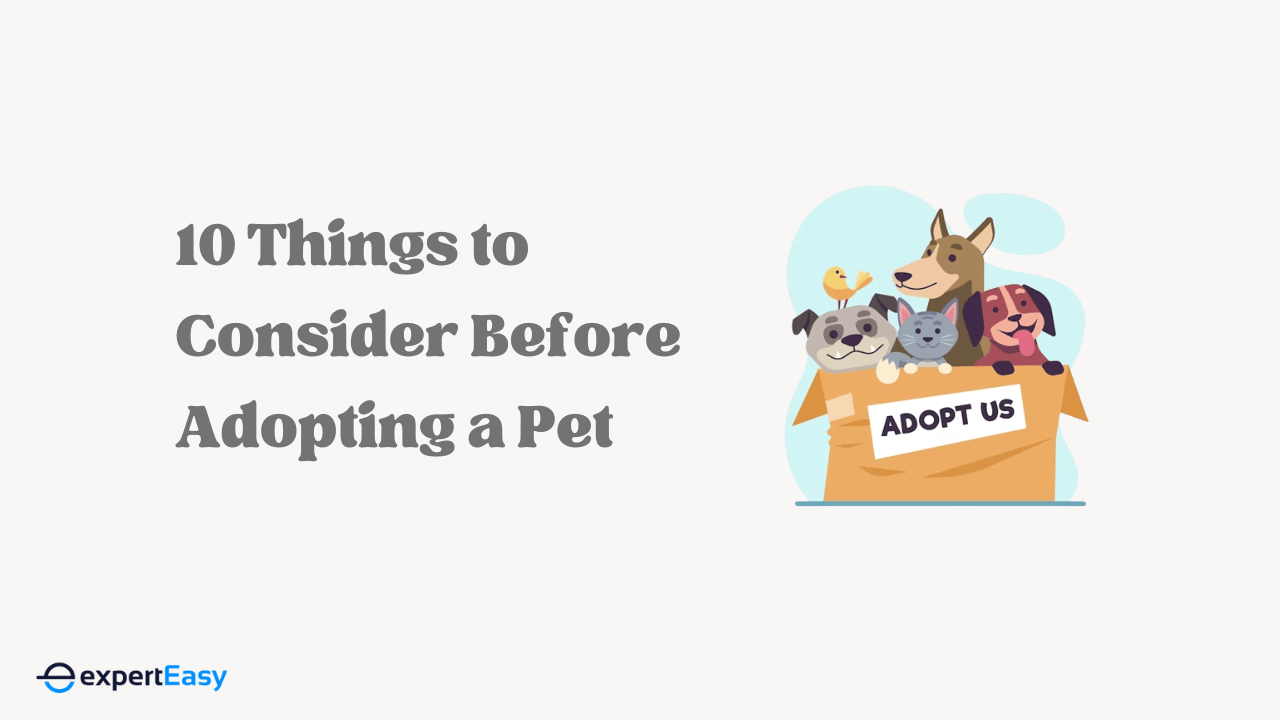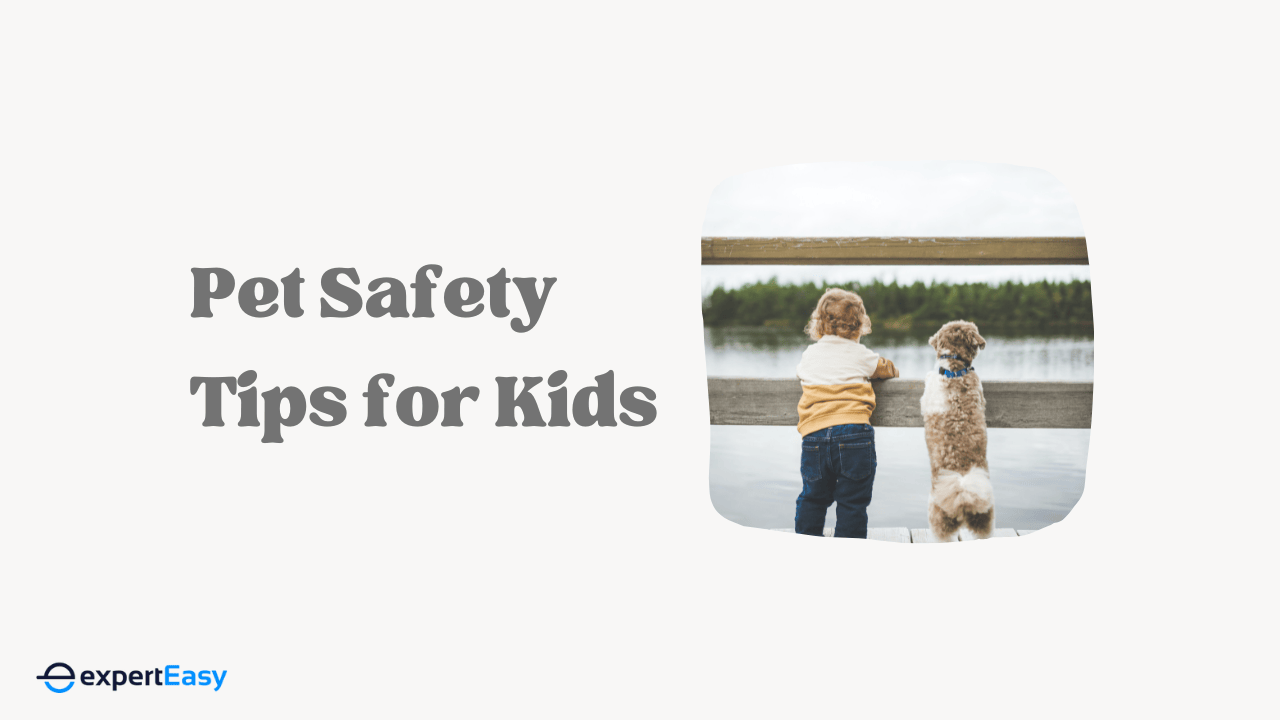If you are looking for a new pet, we encourage you to consider adoption first. Albeit fears that you will get a pet with behavioral problems, many humane societies, shelters, and rescues these days do a good job of pairing a new pet with a family. You undergo an interview to ensure the pet is a good fit for you.
But before then, here are 10 things you should know beforehand. We know it’s hard to resist the cute face of a furry friend who needs a home. But consider the following before bringing a new animal into your home.
#1. Consider your finances.
The first point of consideration before pet adoption is your current financial situation. If getting a new pet will put a strain on your finances or personal life, then rethink your decision. You should be able to provide for yourself and the pet fully.
There is also the adoption fee that you have to pay to the rescue organization to help them maintain their rescue missions. The fee will also pay for some of the vetting costs that the organizations have for all the pets they rescue.
Aside from the adoption cost. There are also upfront expenses for basic needs. You may need a collar, leash, harness, and food bowls, among other necessities, depending on the type of pet. Remember that some of these basic needs may lead to monthly recurring costs.
Then there is pet insurance, which you should opt for. Without it, you need to have sufficient funds set aside for emergencies that involve your pet and are out of your control. It’s also best to prepare for common pet injuries like a fractured tooth, toxicity, or foreign object ingestion.
#2. Factor in your lifestyle.
Most pets live on average from 10 to 18 years, depending on the species, breed, size, and health. If you adopt a pet, you are signing up for a lifetime commitment. The pet becomes part of your family. Is this something that you can confidently introduce into your life? Does your lifestyle and work schedule allow for pet adoption?
If your job role or current schedule requires that you leave home always, you must have a plan in place for when you go away. This means someone to care for the pet when you are not around. If you're adopting a pet without an immediate family present in your absence, can you manage all the responsibility? And if you are living with your family, are they ready for the responsibility?
Remember that you will also need to be able to spend some time with your pet for its well-being. Things you can do with your pet include grooming, playing, or exercising. Healthy pets do best with routine and need to be let out at least three times a day. If you ignore your pet for a long period, it may wander about and cause trouble out of boredom.
#3. Choose the appropriate breed.

It’s important to choose the right breed for your lifestyle. Don’t just pay attention to the photos and the size of the pet. This information may not be enough to determine how much that breed will affect your lifestyle.
First, consider the temperament and activity levels of the pet you intend to adopt. If you are looking to adopt an active pet, then you need a more highly-strung breed. But, you may need a more sociable breed if you have children in the house.
You must also consider age, as juveniles and adults have different needs. This is particularly important if you're adopting for your child or your household. For example, a puppy or a kitten may need much more attention. Be sure to get all the important information about the pet’s breed from the rescue organization.
#4. Exercise patience and time.
Patience is extremely important when adopting any pet, especially pets from rescue homes, as they may not be as cuddly. Pets rescued from the street usually take a little more time to settle in and trust you. They may also have past trauma and, thus, may require time to bond with you for reassurance.
These pets have been moved more than once. From the street to the rescue and from the rescue to your home. It's likely they may be confused as well. You need to understand that the relationship you have with your rescue pet will be like any other relationship. It will take time to build trust.
So, do you have the time and patience to work with your new pet? Are you willing to train and exercise your pet without losing patience?
#5. Pet-proof your home.
Start by creating a safe space for the pet without access to anything important. This is also a place to keep the pet when you cannot watch it all the time. If you just want a small space where the pet can play while you are at home, consider a playpen. A playpen keeps your pet from roaming all over the house and leaving messes everywhere.
If you want to give your pet more room to roam than in a playpen, then use gates to block off places that are off-limits to them. Such as a carpeted bedroom or a living room with new fancy couches. Gates can be very resourceful since they allow your pet enough room to explore while also controlling where it goes and what it does.
Finally, to ensure a harmonious living environment, it's crucial to choose a pet that suits your home and outdoor space. For instance, puppies and kittens are known for their chewing and knocking behaviors. Kennel training is an effective way to manage and train both cats and dogs.
#6. Educate your children.

Pet safety for your kids is important, considering that most bite injuries happen to kids. If your child is too young, it's safer to wait until he or she is four years or older. Even then, it's important to consider their maturity level. If you have children last the appropriate age, then teach them how to respect a pet as another living being.
Teach your child about consent; if a pet says no by hiding or walking away, they must respect that and leave it alone. You should also supervise their relationship with the pet to resolve conflicts or inappropriate behaviours. At least initially, when you introduce the pet into the family.
#7. Consider your older pets.
If you have older pets at home, your new and current pets may not get along, especially if they are of different species. You have to introduce them accordingly. For instance, dogs can be scary and intimidating to cats if they have never met one. Introducing your dog to your cat should, therefore, be a gradual process. A solid sit-stay cue can be very helpful during such introductions.
If you have an older pet cat, we do not recommend putting it into a carrier. Instead, let it loose and be free to make its own choices. You can have the adopted dog on a leash or behind a pet gate. If you have extra hands, you can hold your new dog on a leash on one side while another person rewards the cat with praise or treats if it accepts the newcomer's presence.
Some useful things you can include during the introductions include scent swapping at a distance from each other; this is particularly helpful when introducing two cats. The idea is to allow both cats to become fully comfortable in the presence of the smell of the other cat before physically meeting to boost the chances that they will accept the physical presence of each other.
#8. Spend time with the pet before adopting.
Many rescue organizations have private spaces where you can meet and interact with pets you want to adopt. Spend time with the pet you intend to adopt for a few hours to tell if they are the right fit for you and ensure that its personality and needs match your lifestyle and expectations.
This prevents potential issues that may arise from a mismatch, such as behavioral problems or the inability to provide proper care. Additionally, spending time with a pet before adoption can help establish a bond and ensure that you are committed to providing them with a loving and permanent home.
#9. Personalize your pet’s meals.

Say you have gone through every step of the adoption process and have a new pet at home. It's time for bonding and care. Regarding caring for your pet, know that every pet is an individual, and an ingredient that works for one may not agree with another. Allergies are one obvious reaction. However, there are other subtle reactions to food that you should consider as you build your new pet’s diet.
The pet’s history is a good starting point for evaluating what its individual diet need may be. Take note of what it was fed at its rescue shelter. Learn from there if your new pet has any adverse reactions to certain food types.
Mealtimes are a great part of a pet’s life. They play a significant role in their emotional and social reactions. But in a multi-pet household, feeding time may often be associated with stress and competition. Consider this and any background information when planning your pet’s mealtimes.
#10. Find a local veterinarian.
The rescue organizations may ask for contact information for a local veterinarian. If you have other pets in your home, then you most likely have an existing relationship with a vet in your area. If not, you will need to do some research to find a reputable local vet to provide medical care for your new pet.
Your first resource for a vet recommendation should be the rescue organization that you are adopting your pet from. Pet rescues usually have ongoing relationships with a vet clinic that they know and trust.
You should also consider the type of vet care you want for your new pet. Vet clinics offer alternative and complementary treatments, with some specializing in specific areas such as emergency medicine, oncology, or animal behavior. You may need to research your options to choose one that fits the needs of your pet.
Frequently Asked Questions (FAQs)
Here are some frequently asked questions about what is important to know and do before pet adoption.
What are the 4 basic needs of pets?
Pets have four basic needs that must be met by their owners: food, water, shelter, and medical care. Providing nutritious food and clean water is essential for the health and well-being of the pet. Adequate shelter, whether it be a cozy bed inside the house or a sturdy outdoor dog house, protects the pet from extreme weather conditions. Regular visits to a veterinarian and preventative care such as vaccinations and parasite control ensure that the pet is healthy and protected from diseases.
What is the best age to adopt a pet?
The best age to adopt a pet depends on your lifestyle and personal preferences. Adopting a young animal, such as a puppy or kitten, can be a great option if you have the time and energy to train and socialize with them. On the other hand, adopting an older pet, such as an adult dog or cat, can be a good choice if you want a companion that is already trained and settled. It's important to consider the pet's personality, health status, and compatibility with your household before deciding.
Wrapping Up
Pet adoption can be a tough decision involving more than one person. Your partner and children should be included in the decision-making process. Discussing what is expected of each family member regarding the pet’s care can help ensure the adoption process is successful. That said, take into account the aforementioned things when doing your homework to avoid common mistakes during pet adoption.







